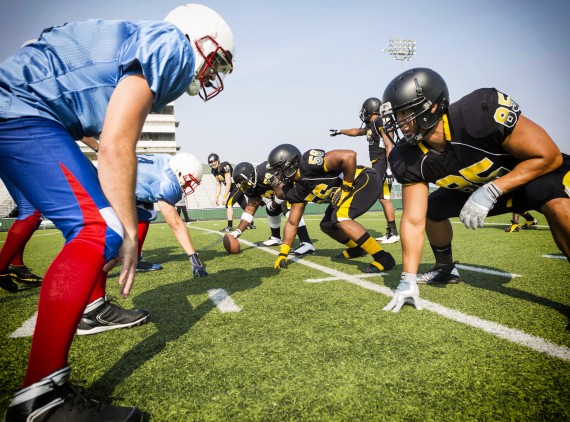A concussion is a temporary brain injury resulting from trauma to the head. Concussions in youth athletes can happen in both contact and non-contact sports. Symptoms may include dizziness, headaches, nausea and sensitivity to light or noise.
Michael Puchowicz, MD, at Phoenix Children’s offers tips and concussion return-to-play guidance to help youth athletes get the care they need to recover from a concussion.
The importance of proper diagnosis and care after a concussion
If you suspect your child or teen has a sports-related concussion, Dr. Puchowicz recommends getting them evaluated and diagnosed by a sports medicine specialist at Phoenix Children’s Concussion Clinic.
The Concussion Clinic includes experts from the Sports Medicine Program and Barrow Neurological Institute at Phoenix Children’s, ensuring patients receive specialized care. Our comprehensive clinic includes thorough assessments, personalized treatment plans and diligent follow-up care to support youth athletes in their recovery and help them successfully return to school and physical activities.
Because youth athletes’ brains are rapidly developing through childhood and adolescence, concussions affect them differently at each stage of life. Proper recognition and management of concussions are essential to ensure safety and long-term health. Returning to activities too quickly or too slowly after a concussion, can negatively impact health, schoolwork and athletic performance.
When a child or teen is recovering from a concussion, their brain is more vulnerable to further injury. Also, their reaction time and processing speed may be slower. It may not be safe for them to keep playing contact or high-risk sports during this time. They may be more likely to be injured or get another concussion.
“Symptoms can be worse and take longer to resolve with repeat concussions,” said Dr. Puchowicz. “If a young athlete takes another hit too early, they might be out for a couple of months instead of a couple of weeks.”
If not given the proper time to heal, concussions can lead to long-term symptoms and serious brain complications. Following concussion protocols reduces the chance that your child will have a repeat concussion.
A plan to return to school after a concussion
“Your student-athlete is a student first,” said Dr. Puchowicz. “Our first priority is to get back to learning and success in school. True rest is important early on after a concussion, I typically recommend no school or academic activity for 24 to 48 hours.”
The next step is to ease back into schoolwork as symptoms allow. This might mean your child or teen starts doing schoolwork at home before transitioning to half-days at school.
Some kids and adolescents may struggle with computer screens after a concussion. If screens make their symptoms flare up, they should limit exposure to 15 minutes or work with only written materials. You may need to ask teachers for printed notes and deadline extensions.
At Phoenix Children’s, our sports medicine specialists work with you to customize a plan and recommend academic accommodations that may be needed by your child.
Planning a safe return to sports after a concussion
Our concussion specialists strongly recommend that children, adolescents and youth athletes who have experienced a concussion avoid resuming high-risk activities such as contact sports until they can return to school and engage in cognitive tasks without any recurrence of symptoms.
“When we see that a young athlete can get back to school and light activity without symptoms, it helps us know that they are ready to begin a return to sports progression,” said Dr. Puchowicz. “In general, concussion symptoms usually resolve in two to three weeks. However, it can take longer for some teens and kids, so have patience,” advised Dr. Puchowicz.
A cautious approach to contact-sports and high-risk activities is crucial because sustaining another brain injury before the initial concussion has fully healed can lead to severe medical complications. Every youth athlete’s concussion is different, so the time it takes them to get better will vary. A pediatric sports medicine specialist can closely monitor your athlete’s symptoms and recommend the right timeframe.
Concussion return-to-play protocols outline steps to help young athletes safely return to sports after a concussion. Medical professionals use these guidelines to lead athletes through healing and back to full sports activities.
Step 1: Rest and recovery
Your young athlete should get a lot of rest – both physically and mentally – after a concussion. This may include avoiding activity, getting plenty of sleep, limiting screen time and delaying mentally taxing schoolwork. Resting helps the body kickstart the healing process.
Step 2: Symptom monitoring
Your child’s medical provider monitors symptoms to understand how they are healing. They’ll check in with your child to see if they’re experiencing headaches, dizziness, nausea, difficulty concentrating or sensitivity to light and noise.
Step 3: Gradual return to activity
“We used to wait for concussions to get better without doing any activity,” recalled Dr. Puchowicz. “Now, we understand that an appropriate level of activity that doesn’t set off symptoms helps the concussion resolve sooner.”
Your young athlete should only return to contact sports after they’re symptom-free and have been cleared to return to play by their medical provider. Jumping back into contact sports and high-risk activities too soon can increase their risk of getting another concussion.
Phoenix Children’s Concussion Clinic is here to help
“A concussion diagnosis is based largely on symptoms, which is a challenge,” said Dr. Puchowicz.
Kids and adolescents may not understand or report their symptoms in the same way as adults. The experts at Phoenix Children’s customize the concussion evaluation to the athlete’s age and development to ensure the right diagnosis and monitor recovery.
To learn more or to make an appointment, visit our Concussion Clinic or Sports Medicine Program.

